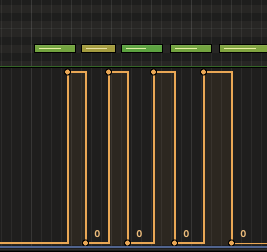Hi LuCsa,
The basic idea is to press the sustain pedal (CC64 up) before the note transition and let it go afterwards (CC64 down). The sustain pedal trick will let the sample sound on, while a new attack is triggered on the same note. Without a note-off signal or the CC64 going down, the note would sound on "indefinitely". If you hear different notes stacking, could it be, that other notes (e.g. on the same track) are affected by the pedalling?
In the example I'm posting, the only instrument being played is the solo violin from the SE+ Solo Strings library. As you can see, I'm sending the CC64 messages from the DAW, to avoid issues with pedal malfunctioning or reverse polarity.
As you can hear, there is a stacking of notes, with the phasing typical of identical notes playing together. What am I doing wrong?
Cheers, Paolo
